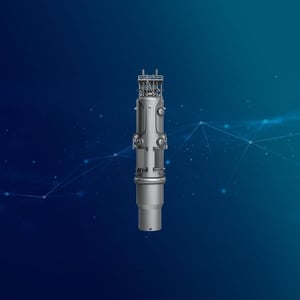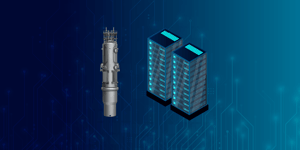
The Types of SMRs
Introduction
Small modular reactors (SMRs) represent a cutting-edge approach to nuclear energy production. These reactors are designed to be compact, flexible, and built in a dedicated manufacturing facility, making them faster and more cost-effective to deploy and maintain. SMRs, with their smaller, flexible size, are versatile for use in power generation and process heat, including hydrogen production. Below, we explore the various SMR designs, their unique features, and their potential to revolutionize the energy sector.
Key Characteristics of SMRs
SMRs are generally defined as reactors with a power capacity of up to 300 MWe per unit, in contrast to conventional nuclear power plant (NPP) reactors, which typically generate around 1 GWe per reactor. Unlike these large NPPs, which are usually located far from industrial facilities, require a grid connection, and are limited to supplying electricity, SMRs offer greater flexibility. Once certified by the NRC, SMRs can be sited closer to industrial facilities, provide both steam and power, and even operate off-grid.
One of the most exciting aspects of SMRs is their modularity. While some SMRs are standalone reactors, others, like the NuScale SMR, are designed to be scalable, allowing multiple reactor modules to be combined in a single plant. This modular approach offers flexibility, redundancy, and the ability to grow capacity incrementally.
Comparison of SMR Types
Currently, the International Atomic Energy Agency recognizes 70 different SMR and microreactor designs globally, although most are primarily test reactors and not pursuing commercialization. There are many different kinds of SMR designs with fundamental differences in the type of fuel, coolant, technology maturity, and regulatory approval phase. The diversity of designs and attributes can be confusing and can lead to inaccurate SMR generalizations. The table below provides a high-level comparison of different SMR technologies:
| SMR Type | Fuel | Coolant | Technology Maturity | Regulatory Certification |
|---|---|---|---|---|
| Light Water Reactor (LWR) SMRs | Low Enriched Uranium (LEU), <5% U-235 | Light water (H₂O) | Very mature; ~60 years of operating history; over 90% of global fleet | ✅ NRC certified (Only NuScale design) |
| Sodium Cooled SMRs | High-Assay Low Enriched Uranium (HALEU), <20% U-235 | Liquid sodium | Experimental; used mainly in research/test reactors; no commercial U.S. reactors | ❌ Not certified by NRC |
| High-Temperature Gas-Cooled SMRs | HALEU (in tri-structural isotropic fuel particles) | Helium gas | Limited; two prismatic reactors operated 7–10 years; pebble beds not yet operated in the U.S. | ❌ Not certified by NRC |
| Molten-Salt SMRs | Uranium (dissolved in molten salt or used as solid fuel) | Molten salt (fluoride or chloride) | Experimental; two test reactors operated in the 1950s–60s | ❌ Not certified by NRC |
NuScale’s Design
The NuScale SMR, which is fully factory fabricated with no in-field construction, is the first and only design certified by the U.S. Nuclear Regulatory Commission (NRC). The company obtained its 50 MWe Design Certification Approval in 2020 and Standard Design Approval for 77 MWe in 2025. NuScale’s scalable design allows for the addition of multiple NuScale Power Modules™ (NPMs) in a single plant, providing unmatched flexibility, redundancy, and adaptability to meet evolving energy needs.
Key advantages of NuScale’s modular approach include:
- Scalability: Configurations range from 1 to 4, 6 or 12 NuScale Power Modules (NPM), delivering up to 924 MWe of clean, reliable power per NPM.
- Redundancy: Independent modules ensure continuous power generation, even during maintenance.
- Flexibility: Supports diverse applications, including grid power, hydrogen production, and water desalination.
- Safety: Passive safety features eliminate the need for operator actions or external power, ensuring resilience against natural disasters.
- Efficiency: Staggered refueling keeps most modules operational, ensuring an uninterrupted power supply.
NuScale’s innovative design sets a new benchmark for modular nuclear technology, combining scalability, safety, and reliability to address global energy challenges.
Conclusion
As global energy needs evolve, SMRs offer versatile solutions for clean energy deployment. From powering rural areas, data centers, and water desalination plants to supporting industrial applications and bolstering grid stability, these reactors are strategically positioned to play a critical role in the future of energy. With a variety of designs advancing, the future of nuclear energy looks diverse, innovative, and sustainable.



